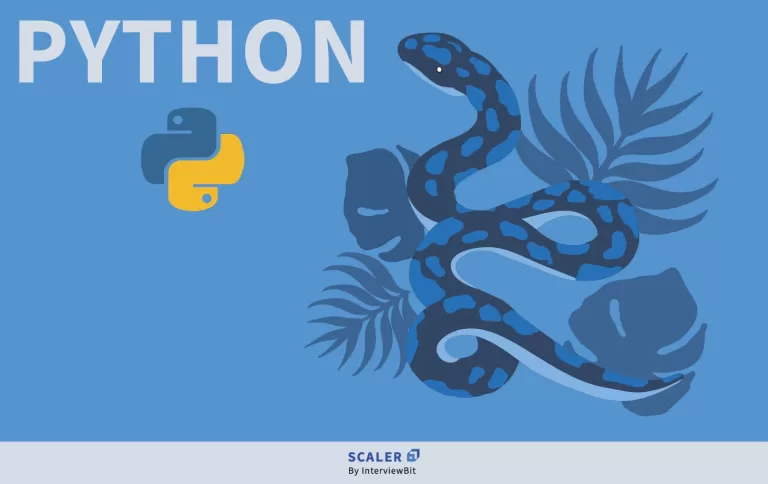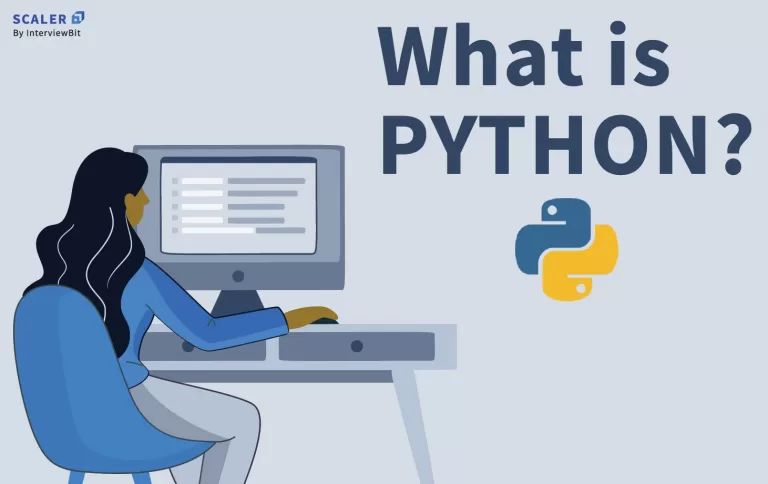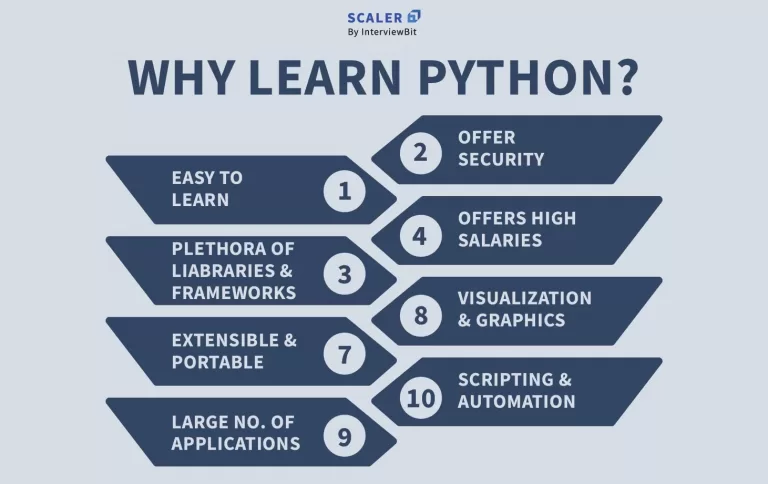An Introduction to Python Programming
Video Tutorial
Overview
Python is a high-level, interpreted, interactive general-purpose programming language. It is designed to be highly readable. Python is dynamically-typed and garbage-collected. Python supports multiple programming paradigms, which includes structured, object-oriented and functional programming.
Scope of article
This article covers:
- Introduction to Python
- Advantages of learning Python
Introduction to Python
Until 1991, most people thought of snakes when they mentioned “Python”. But not anymore! The word Python has taken the world by a storm and is currently all the rage in the world of programming.

Gone are when programmers were fascinated by languages like C++ and Java. Whether it be a beginner or a senior programmer, everyone is considering Python as their go-to programming language. I am sure you will agree that there must be a valid reason behind the popularity of Python, and that is exactly why we are going to understand “What is Python?” in this article!
What is Python?
Python is a high-level, object-oriented programming language developed by Guido van Rossum. This means that Python is based around data and is easily understood by humans.
Earlier, Python was only considered to be useful for automating boring stuff, but soon enough, its general-purpose nature came to light. We realised that Python was not like purpose-specific languages such as HTML/CSS, Ruby or PHP.

The introduction of Python as a general-purpose language revolutionized the world of programming. Python was no longer treated like other languages, i.e. used only to solve specific problems. Can use it in various domains such as Web Development, App Development, Data Science and Machine Learning.
Added to the versatility of Python, its simple syntax makes it the perfect fit for any newbie programmer.
Why Use Python?
Depending on how you plan to use Python, there can be several reasons it’s currently being used in the industry.
Some of the reasons are –
1. Python for Programmers:
The high level of abstraction offered by Python benefits all programmers. It’s highly interactive and has a simple syntax, making it everyone’s favourite.
2. Python for AI and Machine Learning
Because of its stable, flexible and straightforward nature, Python is used extensively in Machine Learning and Artificial Intelligence. It is one of the go-to languages for Data Scientists and Machine Learning practitioners because of the available AI and ML toolkits.
3. Data Analytics and Data Science
Much like AI and ML, the field of Data Analytics and Data Science also see wide use of Python. In the present time, when we are creating more and more data every day, efficient platforms like Python are in huge demand for analysing, manipulating and managing data.
4. Web Development and Game Development
Web Development and Game Development fields are not too far behind in the Python race. Python is extremely efficient for developing quick game prototypes, which offers an edge to most developers. Web frameworks like Django and Flask make it challenging to say no to Python programming when it comes to tasks related to web development.
5. Highly compatible with all major platforms
Python supports all popular operating systems. The same codes can run on different platforms without recompilation.
6. Python for sysadmins
Those familiar with the art of shell scripting appreciate Python sincerely. Python ensures that the process of automating boring tasks is not boring or too complex.
7. Python Community
Python has an enormous user community. This indicates that no matter what problem you will run into, you will be able to find a solution with the support of the Python Community.
Is Python Open Source?
As per the Open Source Initiative certification and under the GPL-compatible license, all modern versions of Python are open source. Python is indeed absolutely free, even for commercial use.
Although the Python logo is trademarked, some customization is permitted.
What Can Python Do?

We can achieve a lot by using Python as a programming language. Here’s a list of things we can do with Python-
- Create web applications on a server.
- Create workflows along with software.
- Read and modify database systems.
- Solve complex problems and handle big data.
- Create rapidly-developed production-ready software.
Reason to Learn Python

Let’s look at some key reasons –
1. Python is easy to learn
Yes! You read that right. Python's simple syntax increases its readability and ensures that it is one of the easiest programming languages to learn.
Most of us are often intimidated by programming when we are beginners. Python acts as a friend when you start learning and provides you with syntax like English!
2. Python has multiple libraries, frameworks and packages
Think of a programmable solution, look up relevant Python libraries, import them and finally implement your solution by writing code in Python! Believe it or not, it is as simple as it sounds.
Python offers several popular and powerful libraries such as NumPy and Pandas for Data Science; Matplotlib and Seaborn for Data Visualization; Keras, PyTorch, etc., for Machine Learning and so much more!
3. Python and its applications.
If you decide to visit python.org, you will find numerous Python Success Stories. These success stories stem from companies working in domains such as recruiting, healthcare, financial services, marketing and education, to name a few. So we can say the applications of Python are endless, and the present seems like a good time to hop on the Python bandwagon!
4. Python is a dynamically typed and extensible language.
Unlike traditional programming languages like Java and C, there is no strict declaration of variables before assigning them values. This enables Python to be flexible and allows the variables to have a different data type at different times during the execution. This makes Python dynamically typed. We can use Python to modify or add syntax and code in other languages, making it an extensible language.
Python Basic Syntax
The basic syntax of Python is very simple and extremely user-friendly. It is almost like English although it bears some similarity to the syntax of Java, JavaScript and Perl.
There are three key aspects of the syntax of Python that sets it apart from all other programming languages. They are –
1. Python Indentation
In most programming languages, indentation is added to facilitate the readability of code. But in Python, indentation plays a very vital role.
Indentation is nothing but the white spaces added before starting a line of code. Python uses indentation to indicate a beginning of a block of code instead of brackets. So Python programmers always have to be careful about indenting their codes correctly.
2. Python Declaration
Since Python is a dynamically typed language, the variable declaration in Python is quite different compared to other programming languages. In Python, we need not specify the data type at the time of declaration and can manipulate it during the program execution.
3. Python Comments
Comments in Python are of 3 types –
- Single-Line Comments- These are added using the “#” symbol, followed by the relevant comment.
- Multi-Line Comments-These can be added either by using the “#” symbol on every line or using the delimiter (""").
- Docstring- Docstring is an in-built feature in Python and is invoked using the doc attribute.
Example of Python Program
Now that we have learned what is Python and what it can do let’s write a simple Python program to put our knowledge to use!
Take a look at this example of a Python program –
Problem Statement – Write a Python program to take two numbers from the user and print its sum.
Code:
- In the above code snippet, we took two numbers from the user using the “input” function of Python and computed the sum.
- The sum was then displayed using the “print” function.
- We also added the relevant comment for the same.
Python Advantages
The advantages of Python make it even more exciting to learn it! Here are some of them –
- Several Python jobs are available in the industry.
- The salary is amazing and very attractive.
- It doesn’t take long to learn Python.
- Since Python is versatile, it makes the developer versatile too!
Conclusion
I am sure by now you have a clear idea about “What is Python?” and what are the advantages it offers.
In this article, we also covered –
- Python Syntax
- Example of Python program
- Reasons to learn Python
- The advantages of Python
Start learning Python today and jet-set your journey to becoming a versatile developer!

